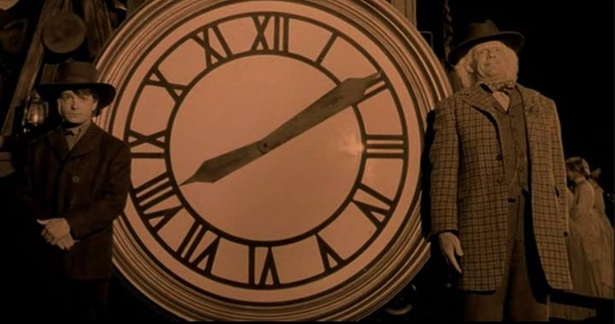
The Clock Itself is Aging: Einstein, Whitehead and Space-Time
 “Whitehead’s novel solution to this paradox regarding the irreconcilable notions of “fact” is to construe the concrete simultaneity of an actual occasion’s specious present as a local, rather than a global, fact. Such a construal entails rejecting the often implicit ontologization of the Einsteinian notion of a ready-made 4-dimensional fabric of space-time “out there” within which actual occasions would unfold, or through which the plane of the present would slide as an indication of global simultaneity (as Bergson seems to have believed 171). Actual occasions are not to be pictured as if they were bits of matter located in a pre-given spatiotemporal “loaf”; rather, the abstract geometry of space-time described by the Lorentz transformations, or by Whitehead’s alternative tensor equations, 172 is derivative from the most general pattern of experience realizable by the actual occasions constitutive of our cosmic epoch. In other words, the geometry of curved space-time itself emerges from the character, taken collectively, of individual drops of experience. These self-creating and other-prehending drops of experience are the final real things of which reality is composed. These processes are what is concrete, while space-time is an abstraction from the concrete.”
“Whitehead’s novel solution to this paradox regarding the irreconcilable notions of “fact” is to construe the concrete simultaneity of an actual occasion’s specious present as a local, rather than a global, fact. Such a construal entails rejecting the often implicit ontologization of the Einsteinian notion of a ready-made 4-dimensional fabric of space-time “out there” within which actual occasions would unfold, or through which the plane of the present would slide as an indication of global simultaneity (as Bergson seems to have believed 171). Actual occasions are not to be pictured as if they were bits of matter located in a pre-given spatiotemporal “loaf”; rather, the abstract geometry of space-time described by the Lorentz transformations, or by Whitehead’s alternative tensor equations, 172 is derivative from the most general pattern of experience realizable by the actual occasions constitutive of our cosmic epoch. In other words, the geometry of curved space-time itself emerges from the character, taken collectively, of individual drops of experience. These self-creating and other-prehending drops of experience are the final real things of which reality is composed. These processes are what is concrete, while space-time is an abstraction from the concrete.”
The above passage comes from a blog post by Matt Segall. Matt is writing about the concept of space-time in physics and how Einstein should have listened to Bergson and Whitehead.
I am endlessly fascinated by Whitehead’s thinking, and one of my favorite Whiteheadian concepts is the “fallacy of misplaced concreteness.” This is what Matt is talking about above; to think about space-time as some kind of fundamental fabric background that things float in and unfold within is, in Whitehead’s opinion, to commit the fallacy of misplaced concreteness. As Matt points out, space-time is an abstraction from what is ultimately real; namely, drops of creative process (or actual occasions of experience). Now, it’s important to remember that this does not mean that space and time (or space-time) don’t exist, necessarily, it’s just that we should keep in mind that they are secondary appearances, not the main feature of reality. Matt again:
“the clock itself–like everything else in the universe, from carbon atoms to stars to the person who consults it–is aging. To be aging is to be always in process. In a process ontology like Whitehead’s, an actual entity doesn’t “have” an age, as though it were an accidental property of an underlying substance; rather, the very essence of an entity is to age, to emerge out of a definite past and pass into an indefinite future.”
0 Comments